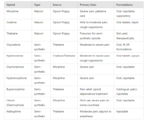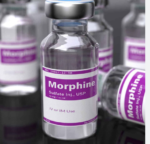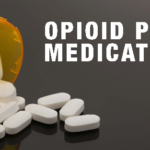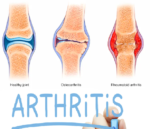Some people carefully distinguish between these two groups of narcotic drugs when they speak about them. Other people use the two terms interchangeably or prefer one over the other. Our language is evolving; lately many people, especially journalists and politicians (and this website), are tending to refer to all of these drugs as “opioids.”

Both opiates and opioids are used medically. They may be prescribed for pain relief, anesthesia, cough suppression, diarrhea suppression, and for treatment of opiate/opioid use disorder.
Both opiates and opioids may also be used illicitly by people with a substance use disorder.
The main difference is in how opiates and opioids are made.
Opiates
Opiates are chemical compounds that are extracted or refined from natural plant matter (poppy sap and fibers). Examples of opiates:
Opium itself is extracted from the poppy and contains chemical compounds, also known as opioid alkaloids. About 20 opioid alkaloids exist in the opium plant, but there are six that occur in the largest amounts. They include:
- Morphine
- Codeine
- Narcotine
- Thebaine
- Papaverine
- Narceine
The two most well-known opioid alkaloids are morphine and codeine, although thebaine and papaverine are also used in the drug industry.
Opioids
Opioids are chemical compounds that generally are not derived from natural plant matter. Most opioids are “made in the lab” or “synthesized.”
Though a few opioid molecules — hydrocodone (e.g., Vicodin), hydromorphone (e.g., Dilaudid), oxycodone (e.g., Oxycontin, Percocet) — may be partially synthesized from chemical components of opium, other popularly-used opioid molecules are designed and manufactured in laboratories. (The phrase “synthetic opioid” is considered redundant; nearly all opioids are synthesized.)
The pharmaceutical industry has created more than 500 different opioid molecules. Some are widely used medically, some are not. Examples of well-known opioids used medically in the U.S.:
- Dextromethorphan (available in the U.S. without prescription as, e.g., NyQuil, Robitussin, TheraFlu, Vicks)
- Dextropropoxyphene (e.g., Darvocet-N, Darvon)
- Loperamide (e.g., Imodium)
- Hydrocodone (e.g., Vicodin)
- Oxycodone (e.g., Oxycontin, Percocet)
- Oxymorphone (e.g., Opana)
- Meperidine (e.g., Demerol)
- Methadone (e.g., Dolophine)
- Fentanyl/fentanil (e.g., Ultiva, Sublimaze, Duragesic patch)
- Carfentanyl/carfentanil (e.g., Wildnil, for veterinary use)
Opiates and Opioids
Both groups of drugs are “narcotics.” (The word “narcotic” simply means sleep-inducing or numbness-inducing (from the Medieval Latin narcoticus, from the Greek narkoun “to benumb.”)
It’s most precise to refer to both groups of narcotic drugs as “opiates and opioids,” the naturally derived and the synthetic. But currently, when people wish to refer to all of these drugs, they often use the term “opioid.”
If a person is dependent on (“addicted to”) one particular opiate or opioid drug, whether it’s medically prescribed or illicitly obtained, they may find that switching to a different opiate or opioid can help maintain their dependency or addiction. That is, substituting one opiate or opioid for another may help prevent withdrawal symptoms. Most of us have heard stories of people with real, actual, pain who became dependent on prescription pain-relieving narcotic drugs, then switched to illicit opioids or the opiate heroin when the medically supplied narcotics ran out.
Pain Medications, Pain Relief, and Pain Management






